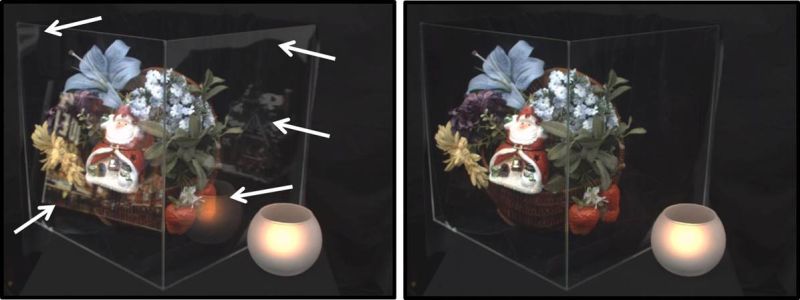
“Snappy, but not snap happy, the speedy MX6 gets sidelined for its poor camera.”
- Understated, demure style
- Good selfie cam and related software
- Poor rear camera
- Out of date software
- Limited connectivity
Meizu is one of the many smartphone brands pushing its way out of China and into the consciousness of those who are more familiar with buying Android phones from LG, Samsung, HTC, Huawei, and ZTE. It’s most closely related to the latter two manufacturers, thanks to its slick designs, heavily customized user interfaces, and quite often, very reasonable price tags.
The Meizu MX6 would have once been a flagship phone for the company, but it has since introduced the Pro range, which supersedes the standard MX series. The specifications are still pleasingly upper-range, and the design and build quality are as good as any we’ve seen from Oppo, OnePlus, ZTE, and many others.
However, buying one will still be seen as a gamble, but should that really be the case? Is opting for a cheaper phone with strong specifications, despite not being overly familiar with the brand, a bad thing? We’ve been using the MX6 for a couple of weeks to see if it’s a welcome alternative to the growing number of excellent smartphones that sell for less than half the price of a big-name-brand device.
Design
The Meizu MX6 looks like an iPhone — and it also feels like one when you’re holding it. While generally accepted today, it’s rather tiresome to have yet another phone that takes its styling cues from Apple’s ever-popular phone. Our review model has a white front panel broken up by a 5.5-inch screen and a stadium shape, multifunction home button. The rear panel is metal with a matte-brushed look, and antenna bands sweeping across the top and bottom, just like Apple’s new iPhone 7.
While gripping the Meizu MX6, you’ll notice neatly curved sides that blend well into the 2.5D curved glass screen edges. It’s very comfortable, but also slippery, just like the
It’s all very restrained. It reminded me of the Oppo F1 Plus in its slightly bland subtlety, aside from the central
Demure and understated, but very well presented, the MX6 isn’t going turn heads thanks to outrageous styling, but it won’t turn them for looking like a cow’s behind either.
Performance and software
Meizu doesn’t use Qualcomm’s Snapdragon processors. It has used Samsung’s Exynos chips in the past, but has recently tasked MediaTek with powering some of its phones. The MediaTek Helio X20 is the chip inside the MX6. It’s a deca-core processor we last encountered inside Xiaomi’s Redmi Pro, where it performed acceptably.
Our model came with 4GB of
The MX6 performed really well when playing games.
Android 6.0 Marshmallow is installed – so you’re not getting the latest version of the OS, — and it comes with Meizu’s own Flyme user interface over the top. It’s visually very different from standard
Probably the most striking change is the complete removal of Android’s back and recent buttons — both hardware and software. Instead, you swipe up on the screen to open the recents view, soft tap on the fingerprint sensor in the home button to go back, and fully press it down to return to the home screens. It’s completely different from any other
The way notifications appear is one of the better alterations. They scroll along the information strip like a ticker at the top of the display on arrival, so if you’re looking at the screen, you won’t be interrupted by a massive dropdown box, and can still read the incoming message. It’s neat, handy, and a worthwhile change. The notification shade itself is attractive, and until swiping down, it’s sparsely populated with shortcuts. You can tailor these shortcuts to your liking, and include everything from a hot spot control to a flashlight shortcut.
There’s a split-screen mode that only operates with certain apps, and is activated in the recent apps menu, where you look out for apps with a “multi” button next to them. Meizu installs a few standard apps, including a weather app, and a video and music app, as well as access to its own app store. None of these can be uninstalled. There’s also a Cleanmaster-style security app that frees up memory, shows battery life, and activates the antivirus software. All apps are spread across multiple home screens, and there’s no option to add an app tray.
Flyme may look very different from Google’s
Display and battery
The 5.5-inch screen is produced by Sharp, and uses in-cell technology — where normally separate screen layers are combined into one — for a highly responsive touch surface. Feather-light touches on the screen are all that’s needed here, and it’s a real pleasure to use, particularly when playing games.
Featherlight touches on the screen are all that’s needed here, and it’s a real pleasure to use.
The 1920 x 1080 pixel resolution is lower than many of its competitors, but doesn’t affect normal use. Turning the brightness up to maximum does begin to wash the screen out. There’s a color temperature setting, and an eye-protection mode for lower blue-light levels at night, complete with a scheduler for automatic use.
A 3,060mAh battery sounds capacious, but in reality, it was only just enough for a day’s worth of average use. Playing a few games, doing some social networking, and running a benchmark sucked 20-percent in about 90 minutes. Use the MX6 hard, and it’ll likely struggle to last a full day. It actually closely matched my iPhone 7 Plus for battery performance, despite the iPhone’s smaller capacity cell, leading us to believe software optimization is the issue.
Camera
Arguably one of the most important features on any modern
That all sounds good, but the results don’t live up to the potential. The first issue is a tendency to over-expose. I found myself tweaking pictures with Snapseed to get them just right, especially when they’d been taken on gray, overcast English days. Doing this definitely brought out the best, but the results still can’t match pictures taken with the Axon 7 or the Honor 8, let alone more expensive
It doesn’t inspire us to take pictures we’d want to keep or share.
But that’s not the worst part. The MX6 has focusing and detail problems, resulting in oddly out-of-focus images that appear blurred. It’s not the screen making the images look odd either — they looked even worse after transferring them onto a larger display. It’s noticeable when looking at images at normal scale, but zoom in and you’d think they’d been taken with a 3-megapixel camera five years ago.
The same issue doesn’t plague the 5-megapixel front camera, which comes with FotoNation’s effective smart beauty software, for extensive tweaking of your selfies after the photo has been snapped. This includes slimming of the face, smoothing out and lightning of the skin, and plenty more. Go mad, and you’ll look like you do in a fairground mirror, but when used subtly, it does the job well.
Sadly, overall, the MX6 doesn’t inspire us to take pictures we’d want to keep or share.
Connectivity, warranty, price, and availability
The Meizu MX6 costs $300, or around 250 British pounds, which is a very reasonable price for a
You’ll have to import an MX6 unless you live in China, so warranties will come through the company you choose. For example, GearBest, a popular online retailer specializing in Chinese electronics, sells the MX6 for $290 and has a comprehensive one-year repair warranty, a three-day dead-on-arrival guarantee, and a 45-day money back offer if the phone suddenly stops working.
Our Take
The Meizu MX6 is a subtly attractive
Is there a better alternative?
The MX6’s low price makes it tempting. It’s not a flagship phone, and the price puts it at the high-end of the midrange, so can it be beaten? To meet the $300 price tag, take a look at the ZTE Axon Mini, which connects to U.S. 4G networks, has a great camera, a beautiful AMOLED screen, and a strong audio system. We liked it so much, we gave it an award when it was announced earlier this year.
Spend a little more and you’ll get the ZTE Axon 7. It’s $400, so around $100 more than the MX6, but it’s well worth the extra investment. It’ll connect to the right networks, has a far better camera, and a faster processor. The OnePlus 3T is also highly recommended, but you’ll have to spend a little more once again.
In the U.K., the Axon 7 Mini is also recommended at a very similar price to the Meizu MX6, and the Xiaomi Redmi Pro — which has a better camera — can be purchased for less, if you’re open to other imported phones. We’re also fans of the Honor 5X, which is cheaper than the MX6 and has better connectivity, plus a surprisingly good camera.
How long will it last?
The MX6 isn’t especially rugged, and isn’t water-resistant, so you’ll have to be careful with it.
Based on this, the MX6 is a phone you would buy for today, and not for tomorrow.
Should you buy it?
No, certainly not if you live in the U.S. due to connectivity restrictions. It’s surpassed in ability and performance by the ZTE Axon 7 Mini, which can be pre-ordered for almost the same price. Spend a little more, and considerably better smartphones are available. The MX6 suffers due to the clutch of excellent, reasonably priced smartphones out there.


















